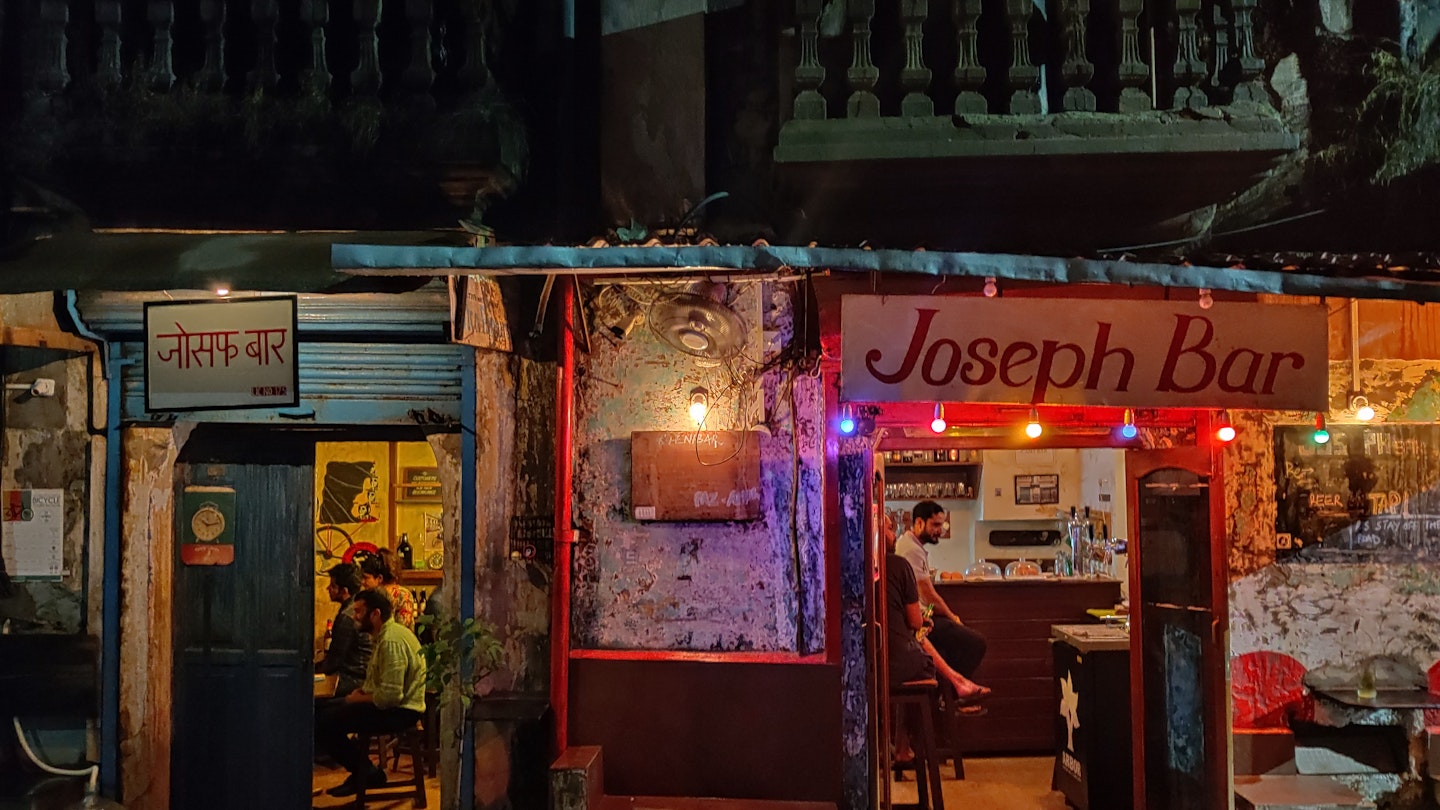Discover Goa’s Traditional Taverns
There’s a 100-year-old bar in Pomburpa village of Goa, a small state on India’s west coast. Rose Bar is run by Joao Fernandes, a todekar (coconut plucker) who is 85 years old. Once a hunter, his bar is strewn with trophies like porcupine hair and a collection of ancient garrafões – traditional glass-blown containers used to store the local brew, feni.
Feni is a potent spirit made from cashew or coconut palm. Watering holes like Rose Bar offer a glimpse into Goa’s drinking past—a time when feni was the drink of choice and taverns were integral to Goan life.

Victor Hugo of Goa Chitra Museum notes, “Taverns were a place where workers, after a long day, would go for a quick shot of feni before heading home. It was a space for relaxation and socialization.”
Purpose and Clientele of Goa’s Taverns
Each tavern served a specific purpose and catered to different clientele: those near the village market for porters and workers, and those by the beaches for fishermen. Some locations even host late-night taverns for night-shift workers.

According to Hansel Vaz, owner of Cazulo Premium Feni and a tavern enthusiast, “It served as a meeting place where people enjoyed drinks and engaging conversations. It was a stress reliever for those who couldn’t afford lavish entertainment.”
The Culinary Experience at Goa’s Taverns
The cuisine offered at these establishments is modest—featuring items such as chone-bhikna (boiled horsegram and peanuts), fish cutlets, and kharo bangdo (dry, salted mackerel). These are typically dry, rich snacks designed to soak up the alcohol.

Each tavern typically serves its own unique feni directly from the source—no branded bottles. Many taverns also offer local beers and feature amenities like stunning views, local games, or even a feni distillery.
Decline of Goa’s Tavern Culture
Despite their rich tradition, these taverns are becoming relics of the past. The rise of modern bars, lack of interest from the younger generation, and government regulations have led to a significant decline in their number. In 2018, statistics from the state excise department noted only 113 taverns that renewed their liquor licenses.

Nevertheless, some locals remain dedicated to preserving this culture by continue patronizing these establishments. Tavern trails across Goa invite locals and visitors alike to explore taverns, engage with owners, try unique drinks, and play indigenous games.
Engaging Visitors in Goa’s Tavern Culture
Agencies like Soul Travelling facilitate Tavern Trails in Panjim and Cansaulim, providing experiences that showcase the essence of Goa’s tavern culture.

While embarking on these trails, patrons hear captivating stories about Goan tavern culture—tales of an intricate credit system, the women who manage many taverns, and the etiquette adhered to within. The entertainment extends to listening to local music or engaging in lively discussions.
A visit to Joseph’s Bar in Panjim showcases the bustling atmosphere that defines this unique pub culture. For many, it serves as an introductory experience to traditional taverns, offering a welcoming ambiance and an array of local brews.
“People come here for good ol’ Goan hospitality,” says Atish Fernandes, owner of Joseph’s Bar. They focus on maintaining a local vibe while serving craft spirits and traditional snacks that capture the essence of Goan culture.

Additionally, an Instagram account named Bars of Goa celebrates this cherished culture, showcasing photos and stories about each tavern. The goal is to inspire others to visit and embrace what was once a vital part of daily life.
Ultimately, it is hoped that Goa’s unique taverns will gain recognition among visitors, allowing them to experience the state’s rich history and drinking culture. As emphasized by Mackinlay Barreto, “These taverns are a wonderland that cannot be replicated anywhere.”




